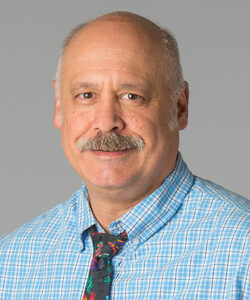Tamarack Aerospace thrives following federal exoneration
Winglet maker expects banner year in revenue

Tamarack Aerospace Group soon will reach the 200th installation of its active winglets, pictured here on the wingtips of a Cessna business jet.
| Tamarack Aerospace Group Inc.Sandpoint, Idaho-based Tamarack Aerospace Group Inc. is on track to realize a banner year after recently being exonerated from an incident that challenged its very existence five years ago, says company President Jacob Klinginsmith.
The Journal last reported on Tamarack in 2021, when the company, which manufactures and installs active winglets for Cessna Citation jets, emerged from voluntary Chapter 11 bankruptcy reorganization.
Tamarack had pursued bankruptcy protection in 2019 after almost 100 Cessna jets were grounded in the U.S. for two months following a noninjury accident in 2018 that involved a jet that had been modified with Tamarack’s active winglets. The Federal Aviation Administration then lifted restrictions on jets equipped with the winglets, provided upgrades were installed.
Earlier this year, however, the National Transportation Safety Board reversed previous findings regarding the 2018 incident and exonerated Tamarack’s winglets from any blame.
“We’re thrilled the FAA and NTSB gave us a clean bill of health having to do with the 2018 accident,” Klinginsmith says. “We felt they missed some important facts. They absolved us, and that’s part of why we’re seeing a strong increase in sales.”
At midyear, sales of Tamarack’s active winglets, which range in price from $225,000 to $325,000 per pair, exceeded the sales volume for all of 2023.
Klinginsmith says Tamarack’s active winglets have been installed on about 10% percent of all active Cessna Citation jets.
“We’re booked through October, and we’ll be announcing our 200th installation pretty soon,” he says.
The winglets reduce drag generated at conventional wingtips, resulting in fuel savings as high as 33%, depending on the aircraft model and how it’s used, Klinginsmith says. They also improve flight stability, providing smoother rides and enhanced safety, he adds. According to Tamarack’s website, active winglets move in response to aerodynamic forces, controlling wing bending during turbulence automatically and independently of other aircraft systems.
Unlike earlier winglet technology, Tamarack’s winglets can be installed on Cessna jets with no other modifications to the wings.
“With the upgrade, there’s no reduction in the life of the airplane,” he says. “It adds value to the aircraft. We see that when talking with brokers. Resale is higher and faster with the winglet upgrade.”
He says the company, which was founded in 2010 by company CEO Nick Guida, has obtained several patents as it continues to advance the technology, adding, “One (patent) came in last week."
In the last three years, the company has expanded its engineering department.
“We’re offering engineering services to other companies around the world, including the U.S. Air Force,” Klinginsmith says.
While Tamarack’s main product line is made up of nine variations of the winglets for Cessna business jets, the company is conducting research and development on other products that may be announced later this year or next, Klinginsmith says.
“We’re doing R&D for other aircraft,” he adds. “The goal is to be on larger aircraft in the future.”
In that vein, Italian regional airline SkyAlps has signed a letter of intent with Tamarack to partner in development of more efficient regional aircraft, including highly modified De Havilland twin-turboprop airliners.
In the Journal’s 2021 report on Tamarack, the company had operated installation centers in South Carolina and in Oxford, England, but now contracts with a few aircraft dealerships that are qualified to install the winglets, Klinginsmith says. The company recently added such a dealership in Wichita, Kansas, and works with others in Florida and Europe.
The company has 29 employees in Sandpoint, including engineering, production, installation, and sales staff.
Tamarack occupies an administration building near the Sandpoint Airport, about 75 miles northeast of Spokane. The company also has two hangars at the airport, one for winglet installation and another for research and development.
Noting that the Sandpoint Airport runway limits the size of jets that can land there, Klinginsmith says, “As we do larger aircraft, we will need facilities at other airports."
He also says, however, “This will always be our headquarters. It’s a great community in Sandpoint, and we’re happy to bring high-tech jobs here.”


_c.webp?t=1763626051)
_web.webp?t=1764835652)

